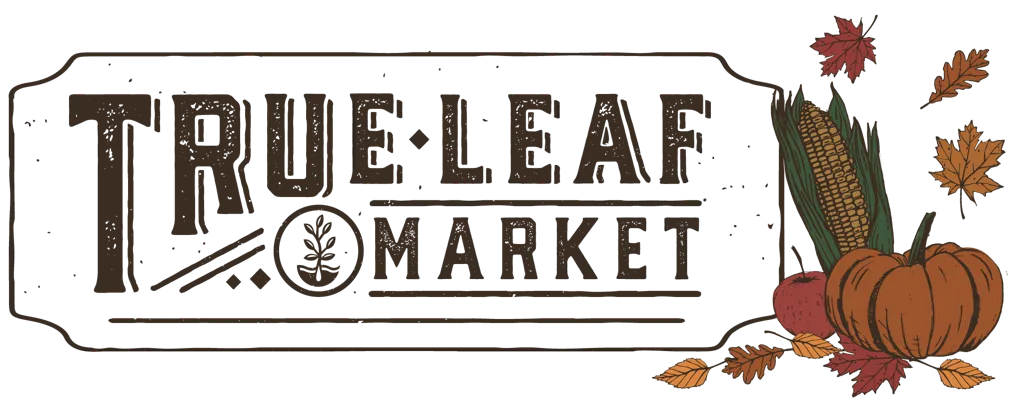Download Free Vegetable Growing Guide PDF
Growing Bai Bu Lao Yellow Pole Beans in the Vegetable Garden
Sow the bean seeds directly outdoors once soil temperatures reach at least 60 F and after the last frost. Plant the seeds at a depth of 1 inch and space them 36-48 inches apart in rows, leaving 48-60 inches between rows to allow for adequate air circulation and room for the plants to develop. Qing Bian plants tend to grow much bigger than typical pole beans and need space. Bai Bu Lao requires a support structure, so set up a trellis or poles at planting time to encourage vertical growth and prevent sprawling.
This bean needs consistent moisture, so aim to water evenly, about 1 inch per week, to maintain soil moisture without creating soggy conditions. Apply an all-purpose fertilizer before planting, and supplement mid-season if plants show signs of stress. As nitrogen-fixing plants, Bai Bu Lao beans make ideal companions to corn and squash. To deter pests like aphids, consider planting marigolds or nasturtiums nearby, as these can serve as natural pest deterrents.
Harvesting Bai Bu Lao Yellow Pole Beans
Harvesting can begin once the beans get to be around 11 inches long while they’re still young and tender for the best snap bean texture. Use scissors to cut the pods cleanly from the plant, which encourages ongoing production. Bai Bu Lao Yellow Pole Beans are generally grown as snap beans, meaning they’re enjoyed fresh. However, they can also be left to mature for a more developed flavor suitable for stews or heavier dishes. Their bright yellow color makes them easy to spot, aiding in efficient harvesting.
About Bai Bu Lao Yellow Pole Bean Garden Seeds
With its stunning color, it’s a decorative and productive addition, and it’s highly nutritious, offering protein, fiber, and antioxidants. It’s ideal for fresh eating, but it also holds up well in cooking, retaining its sweetness and texture.
The Bai Bu Lao Yellow Pole Bean has cultural importance as a symbol of longevity and youthfulness, making it a prized plant in traditional Chinese gardens.
This variety is well-loved for its adaptability and productivity, making it an appealing option for both beginner and experienced gardeners looking to grow a distinct, hardy bean variety.
This bean can also be referred to as Lai Lao Shao, White Romano Beans, Flat Beans, Italian Roma Beans, Helda Beans, Runner Beans, Broad Beans, or Pole Beans.
Tips From Our Gardeners
“Try sauteeing these beans with garlic and sesame oil for an easy side dish to compliment any Asian-inspired dinner. Top with black sesame seeds for visual appeal and added texture!”
 |
- Lara Wadsworth, True Leaf Market Writer
|
Other Resources
Bai Bu Lao Yellow Pole Bean Seeds Per Package:
- 20 g - Wholesale - Approximately 48 Seeds
- 4 oz - Wholesale - Approximately 272 Seeds
- 1 lb - Bulk Seeds - Approximately 1,088 Seeds
- 5 lb - Bulk Seeds - Approximately 5,440 Seeds
Non-GMO Bai Bu Lao Yellow Pole Bean seeds are available for Fast Free Shipping on qualifying orders.
=======
ATTRIBUTES
Basic Info
| Latin Name: |
Phaseolus vulgaris
|
| Bean Sub-Type: |
Romano - Romano beans (also known as roman beans, cranberry beans, saluggia beans, gadhra beans, and rosecoco beans) are snap beans (edible pods) except for the shape, which is broad and flat, vs. the regular round cylindrical shape of regular snap beans. They are crunchy with a sweet flavor. Asian - Asian beans encompass a wide spectrum of bean varieties either originating from Asia or being especially popular in Asian cultures. |
| Bai Bu Lao Yellow Pole Bean Color: |
Green, Yellow |
| Bai Bu Lao Yellow Pole Bean Flavor: |
Sweet and mild. |
Growing Info
| Hardiness Zone: |
3, 4, 5, 6, 7, 8, 9 Annual Crop: Not Intended to Overwinter |
| Days to Maturity: |
55-60 |
| Days to Germination: |
5-10 |
| Seeding Depth: |
1 inch |
| Plant Spacing: |
36-48 inches |
| Row Spacing: |
48-60 inches |
| Plant Height: |
60-96 inches |
| Growth Habit: |
Vining |
| Soil Preference: |
Beans prefer well-draining, nutrient-rich, loamy soil with a pH of 6.0-6.8. As light feeders and nitrogen-fixing legumes, beans do not require nitrogen-heavy fertilizers. |
| Temperature Preference: |
Warmer (70-85 F). |
| Light Preference: |
Full Sun |
Other
| Direct Sow: |
Yes, direct sow when soil temperatures are reliably above 60 F. Planting with an inoculant may increase yields, but is certainly not required for a successful grow. |
| Start Indoors: |
Not Recommended. Beans grow best without any root disturbance. We recommend direct sowing instead of transplanting. |
| Bean Pollination: |
Beans are self-pollinating as they contain both the male and female parts within their flowers, unlike other fruit and vegetable plants. While they are self-pollinating, having a variety of pollinators and flowers around will improve yields by ensuring the greatest chances for pollinating events to occur. |
| Snap or Shell Bean: |
Snap - Snap beans have a fleshy edible pod. Snap beans are also commonly referred to as string beans or green beans (though not all snap beans are green). They are called snap beans because they make a snapping sound when you break them in half. |
| Pole or Bush Bean: |
Pole - Pole beans are vining-type plants that put out runners that grow very long or tall. Pole beans are so-called because they require a trellis, support, or wait for it… a pole. Pole beans require more effort than bush beans but may also be grown in containers with the right support. |
| Plant Width: |
12-24 inches |
| Growth Speed: |
Early - Ready for harvest around 45-65 days. |
| Deer Resistant: |
No |
| Germination Temperature: |
70-90 F |
| Pests and Diseases: |
Beans are susceptible to beetles, aphids, spider mites, and cutworms. Look for signs of chewing, curling leaves, eggs on the undersides of leaves, and leaf discoloration. Keeping your bean plants clean from dust build-up and surrounded by a variety of plants to help deter and prevent pest damage. Beans are also susceptible to powdery mildew, bean blight, rust, and root rot. Maintain a regular watering schedule that avoids overly saturated soil. The roots need adequate time to air out between watering. This will also help prevent common fungal and bacterial diseases from developing. Good air circulation and applying water to the ground rather than the leaves will help maintain healthy bean plant growth. |
| Garden Size: |
Greenhouse, Garden Plot, Raised Bed, Container |
| Bean Use: |
These beans are versatile; they can be used as snap beans when young or shelled if left to mature. Their texture and flavor make them ideal for fresh dishes, stir-fries, and salads. |
| Climate Tolerance: |
Drought |



















